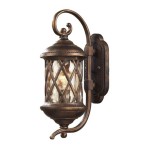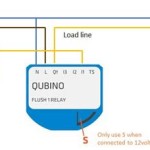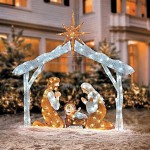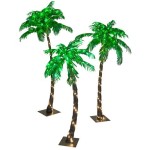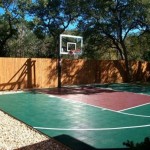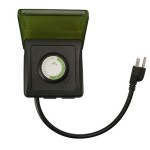Outdoor Dining Area Lighting Designs for Kitchen
The integration of outdoor dining areas with kitchens has become a popular trend in home design. This seamless transition allows for convenient food preparation and serving, enhancing the overall outdoor experience. Effective lighting is crucial in creating a functional and aesthetically pleasing outdoor dining space connected to the kitchen. Careful planning and design are essential to ensure that the lighting not only illuminates the area adequately but also contributes to the ambiance and safety of the outdoor kitchen and dining zone.
Choosing the right lighting for an outdoor dining area adjacent to the kitchen involves considering various factors such as the size of the space, the style of the home, and the intended use of the area. The lighting should be versatile enough to accommodate different activities, from casual family meals to formal gatherings. Moreover, the lighting design should complement the overall landscape and architectural features of the property.
Understanding the Principles of Outdoor Lighting Design
Effective outdoor lighting design is based on several fundamental principles. Layering light is a key concept, involving the combination of different types of lighting to create a balanced and functional space. Ambient or general lighting provides overall illumination, task lighting focuses on specific areas for food preparation or dining, and accent lighting highlights architectural features or landscaping elements. By combining these layers, a well-lit and visually appealing outdoor dining area can be achieved.
Another important principle is minimizing light pollution. Light pollution refers to the excessive or misdirected artificial light that can disrupt natural ecosystems and obscure the night sky. Choosing fixtures that direct light downwards and using shielded bulbs can help to reduce light pollution while still providing adequate illumination. Consider the color temperature of the light sources as well. Warmer temperatures (around 2700-3000K) are generally preferred for dining areas as they create a more inviting and relaxed atmosphere, while cooler temperatures may be more suitable for task lighting in the kitchen area.
Safety is also a paramount concern in outdoor lighting design. Adequate lighting is essential to prevent accidents and injuries, especially in areas with uneven surfaces or steps. Path lighting, step lighting, and well-lit walkways can significantly improve safety and reduce the risk of falls. Using weatherproof fixtures and ensuring that all electrical connections are properly installed and protected from the elements is crucial for long-term reliability and safety.
Types of Outdoor Lighting Fixtures for Kitchen Dining Areas
Selecting the appropriate lighting fixtures is critical to the success of an outdoor dining area lighting design. There are numerous options available, each with its own advantages and disadvantages. String lights are a popular choice for creating a festive and casual atmosphere. They can be strung across trees, fences, or pergolas, providing a soft and ambient glow. However, string lights may not provide sufficient illumination for tasks such as food preparation and may require supplemental lighting.
Pendant lights and chandeliers can add a touch of elegance and sophistication to an outdoor dining area. These fixtures are typically suspended from a pergola, gazebo, or covered patio. They can provide both ambient and task lighting, depending on the design and placement. When selecting pendant lights or chandeliers for outdoor use, it is essential to choose fixtures that are specifically designed for outdoor environments and are resistant to moisture and corrosion.
Recessed lighting is a discreet and versatile option that can be used to provide both ambient and task lighting. Recessed lights are typically installed in the ceiling or underside of a covered patio or pergola. They can be used to illuminate specific areas, such as a dining table or a kitchen counter. Recessed lighting is particularly useful for creating a clean and minimalist look. However, proper installation is crucial to ensure that the fixtures are weatherproof and protected from moisture.
Wall-mounted lights are another popular choice for outdoor dining areas. They can be used to provide ambient lighting, accent lighting, or task lighting. Wall-mounted lights are typically installed on the exterior walls of a house or other structure. They can be used to illuminate pathways, highlight architectural features, or provide task lighting for outdoor kitchens. When selecting wall-mounted lights, it is important to choose fixtures that are appropriate for the style of the home and the intended use of the area.
Spotlights and floodlights can be used to highlight specific features of the landscape or architecture. They can be used to illuminate trees, shrubs, or other plants, creating a dramatic effect. Spotlights and floodlights can also be used to highlight architectural features, such as a stone wall or a water feature. When using spotlights and floodlights, it is important to aim the light carefully to avoid glare and light pollution.
Table lamps and floor lamps designed for outdoor use can provide a warm and inviting ambiance to an outdoor dining space. These lamps are typically portable and can be easily moved around to provide light where it is needed. They are a great option for creating a cozy and intimate atmosphere, especially for smaller gatherings. Look for lamps made with weatherproof materials and weighted bases to ensure stability in windy conditions.
Integrating Lighting with Kitchen Functionality
Seamlessly integrating the outdoor dining area lighting with the kitchen's functionality is essential for creating a cohesive and practical space. This involves considering how the lighting will support food preparation, serving, and cleanup activities. Task lighting is particularly important in this area, as it provides focused illumination for specific tasks.
For outdoor kitchens, under-cabinet lighting is a valuable addition. It provides direct light on countertops and work surfaces, making it easier to see what you are doing while preparing food. Choose LED strip lights or individual puck lights that are designed for outdoor use and are resistant to moisture and corrosion. Ensure that the under-cabinet lighting is bright enough to provide adequate illumination without creating glare.
Overhead lighting, such as pendant lights or recessed lights, can also be used to provide task lighting for outdoor kitchens. These fixtures should be positioned directly above the work area to provide optimal illumination. Consider using dimmers to adjust the brightness of the overhead lighting as needed. This allows you to create a more relaxed atmosphere for dining while still providing sufficient light for food preparation.
In dining areas, consider using a combination of ambient and task lighting to create a flexible and functional space. Ambient lighting, such as string lights or wall-mounted lights, can provide overall illumination, while task lighting, such as pendant lights or table lamps, can provide focused light for dining. Dimmers are particularly useful for adjusting the brightness of the lighting to suit different activities and moods. For example, you may want to use brighter lighting for a casual family meal and dimmer lighting for a romantic dinner.
Consider the placement of electrical outlets and switches when designing the outdoor dining area lighting. Ensure that there are enough outlets to power all of the lighting fixtures and appliances. Place the switches in convenient locations so that you can easily turn the lights on and off. Consider using smart lighting systems that can be controlled remotely via a smartphone or tablet. This allows you to adjust the lighting settings from anywhere, making it easy to create the perfect atmosphere for any occasion.
Motion-sensor lighting can be incorporated for added security and convenience. These lights automatically turn on when motion is detected, providing instant illumination for anyone approaching the area. This is particularly useful for pathways and entrances, as it helps to prevent accidents and deter intruders. Motion-sensor lights can also be programmed to turn off automatically after a certain period of inactivity, saving energy and reducing light pollution.
The choice of bulbs also plays a crucial role. LED bulbs are generally recommended for outdoor lighting due to their energy efficiency, long lifespan, and durability. They are also available in a wide range of color temperatures, allowing you to customize the ambiance of the outdoor dining area. Consider using bulbs with a warm color temperature for a more inviting and relaxed atmosphere, and bulbs with a cooler color temperature for task lighting.
Finally, remember to consult with a qualified electrician or lighting designer to ensure that the outdoor dining area lighting is installed safely and correctly. They can help you choose the right fixtures and bulbs, and can also ensure that the electrical wiring is up to code. Investing in professional installation can help to prevent accidents and ensure that the outdoor lighting system will last for many years to come.

8 Outdoor Kitchen Lighting Ideas Angi

Outdoor Kitchen Design Lanchester Grill Hearth

Top 6 Backyard Lighting Trends That Last

10 Kitchen Ceiling Lighting Ideas 2025 Up For Experiments

21 Best Outdoor Lighting Ideas Easy Patio

8 Backyard Lighting Ideas For A Serious Outdoor Glow Up

64 Outdoor Kitchen Design Ideas For A Gastronomic Paradise

27 Smart Ways To Illuminate An Outdoor Space Digsdigs

Exterior Patio Dining Table And Outdoor Kitchen Traditional San Francisco By Hanomoco Design Houzz

Al Fresco Kitchens Dining Kitchenvisions
Related Posts
